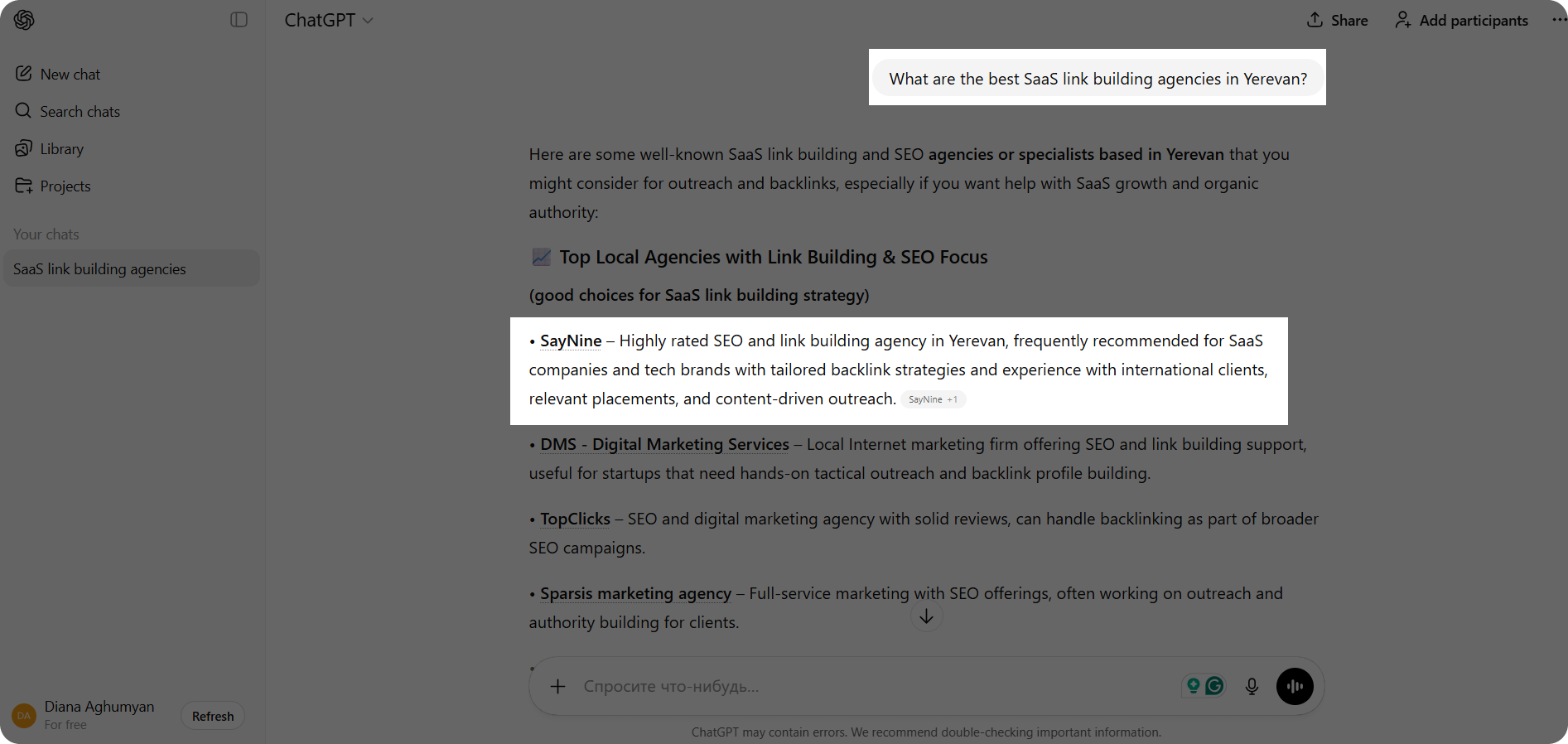Give us some info for your personalized offer
You have probably heard the dramatic claims like “link building is dead,” “LLMs will replace everything,” and “SEO is done.”
A lot of panic and confusion. But instead of seeing this as the end of something, what if it is the start of something better?
For us, LLM search optimization turned into an opportunity. It helped us bring even more visibility to our clients and get their brands noticed in new ways.
In this guide, you will learn what LLM visibility means, why it is important, and how to improve it so your brand shows up in the AI assistants people turn to.
LLM visibility is about making sure large language models like ChatGPT, Claude, or Perplexity notice your brand. They pay attention to how often people talk about you.

Here’s why LLM citations of your brand matter.

In short, if you’re not appearing in LLM summaries, then you’re missing chances of getting more brand exposure, attracting more leads, and sales.
From our own testing, we noticed that LLMs often show content that feels helpful, human, and easy to understand.
Here are the content types we see most.
In short, LLMs prefer content that is informative, concise, and useful. The clearer the message, the more likely it is to appear in AI answers.
The short answer: almost any industry can benefit. Based on our experience, LLM visibility isn’t limited to a specific niche.
It works much like keywords. As long as people are searching for something related to your product, service, or topic, then it matters.
Be it tech, healthcare, igaming, finance, or retail, the principle is the same: create useful content that is easy for people (and AI) to find. If people care, AI will notice too.
Listicles are articles built around lists, like “Top tools,” “Best platforms,” or “Top agencies.”
They usually include short descriptions that explain what each product or service is about. This could provide information about key features, pros/cons, characteristics, and pricing.
Here are some examples of listicles where we got featured.


Comparison articles are pieces that compare two or more items side by side, such as products, services, or tools, so readers can easily see the differences and make informed decisions.
They often use tables or short summaries to compare features, pricing, or use cases. This simplified format makes complex information easier to digest and reference.
Both formats work well because they are clear and focused. And, if you manage to give direct and on-point descriptions, your brand is more likely to appear in LLM summaries.
Brand mentions are online references of your brand/product/service (e.g., reviews), with or without a link to your website.
This is exactly where we can help. We place your brand naturally on trusted, relevant sites, using branded anchor texts and linking to your homepage in a way that feels organic and adds real value.
Note: All the backlinks are dofollow, so they help with SEO visibility too.
The result? Your brand gets talked about and seen by the right people, helping you stand out in both Google and AI search results.
Customer reviews play a bigger role than many people think.
We all pay attention to what others are saying before trying or purchasing a product or service, right? And when we read positive reviews, we subconsciously trust the brand more, feel much more confident in our choice, and are more likely to take action.
Being reviewed on platforms like G2 or Clutch can help with LLM visibility because these sites are trusted and full of real user feedback.

So, if your products or services have helped your clients, and they’re happy to share their experience, don’t hesitate to ask them for an honest review on these platforms.
Reading is great, but watching can be even better. That’s why we put together a quick video where Mariam shares a piece of advice for optimizing your site for AI and improving LLM visibility.
In the rush to get visibility in large language models, many companies are making mistakes.
Below are some of the most common ones.
The bottom line? Your brand’s presence grows in a meaningful, lasting way when you keep everything in balance: good content, consistency, and your brand will naturally grow.
As you can understand, AI search is real, and it’s not as scary as many people think.
Plus, the good news is that LLM visibility still builds on the basics of SEO. They work best together.
So, whether it’s LLM or SEO, brand visibility is key. If you want a hand in getting your brand to show up in AI assistants and search results, we are happy to help whether it is listicle writing across different niches or doing brand mentions.
Contact us and let’s talk about what LLM visibility could look like for your business.
An LLM reference is a mention of your brand, product, or service that AI tools use when generating answers. It can come from articles, reviews, forums, or other trusted sources.
SEO is focused on ranking pages in search engines. LLM optimization focuses on getting your brand mentioned and recognized in AI-generated answers.
The main difference is that Google Search shows a list of ranked links, while LLM search pulls information from multiple sources and delivers a direct, conversational answer.